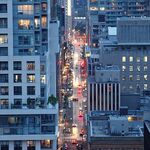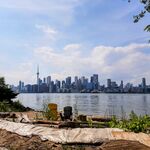Just a general note regarding the pros/cons of off-street rapid transit in Hydro ROW: Put into the Con category the difficulty in promoting development, similar to experience of running subways down the centre of limited access highways, or those GO stations on freight trackage in industrial zones. Permanent transit infrastructure running in/under the street seems to foster increased economic activity -- and local ridership generation...
In my book development potential is not a more important consideration than ROW advantages such as construction cost/ease as well as reduced NIMBY opposition, etc., but it is a deal-maker for some.
Ford et al say they dislike surface transit because of inconvenience to cars, but there is also likely a belief that nothing short of subways will satisfy big development interests.
-ed
Hmm... I don't suppose any of the adamant "subway is the only way to go" folks on newspaper comment pages have a connection to large developers, do they...?

Y'all heard of QueensQuayKaren?
http://davefleet.com/2010/10/unethical-social-media-worst/




